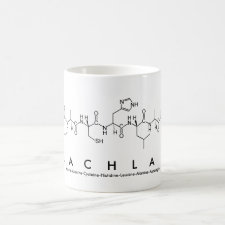
Authors: Hashim SNNS, Boysen RI, Yang YZ, Schwarz LJ, Danylec B, Hearn MTW
Article Title: Parallel enrichment of polyphenols and phytosterols from Pinot noir grape seeds with molecularly imprinted polymers and analysis by capillary high-performance liquid chromatography electrospray ionisation tandem mass spectrometry.
Publication date: 2020
Journal: Talanta
Volume: 208
Article Number: 120397.
DOI: 10.1016/j.talanta.2019.120397
Alternative URL: https://www.sciencedirect.com/science/article/pii/S0039914019310306
Abstract: This investigation describes an integrated workflow for the parallel extraction and recovery of polyphenols and phytosterols from Pinot noir grape seeds. Using (E)-resveratrol and stigmasterol as exemplars, the approach employs two different molecular imprinted polymers in tandem for the extraction of these compounds and their subsequent analysis by capillary high-performance liquid chromatography (capHPLC) interfaced with electrospray ionisation tandem mass spectrometry (ESI MS/MS). Information on the selectivity of the solid-phase extraction processes was obtained through analysis of the binding behaviour of (E)-resveratrol- and stigmasterol-imprinted polymers using structurally similar polyphenols or phytosterols with the extent of binding determined from the capHPLC-ion trap ESI MS/MS data. This study documents with Pinot noir grape seed extracts and optimised solid-phase extraction protocols that the (E)-resveratrol-templated MIP enabled a very high recovery (99%) of the health-beneficial polyphenol (E)-resveratrol with co-purification of procyanidin and catechin/epicatechin. Further, the stigmasteryl-3-O-methacrylate-templated polymer resulted in high recovery (96%) of the phytosterol stigmasterol with co-purification of campesteryl glycoside. The results also demonstrate that rapid and high-resolution capHPLC-ESI MS/MS methods can be used as part of the work flow for selectivity optimisation and monitoring of the performance of MIPs intended for use in the solid-phase extraction of bioactive molecules with nutraceutical properties from agricultural waste streams
Template and target information: polyphenols, phytosterols, (E)-resveratrol, stigmasterol, procyanidin, catechin, epicatechin, stigmasteryl-3-O-methacrylate, stigmasterol, campesteryl glycoside
Author keywords: Molecularly imprinted polymers, Covalent and non-covalent imprinting, Solid-phase extraction, Polyphenols, Phytosterols



Join the Society for Molecular Imprinting

New items RSS feed
Sign-up for e-mail updates:
Choose between receiving an occasional newsletter or more frequent e-mail alerts.
Click here to go to the sign-up page.
Is your name elemental or peptidic? Enter your name and find out by clicking either of the buttons below!
Other products you may like:
 MIPdatabase
MIPdatabase









